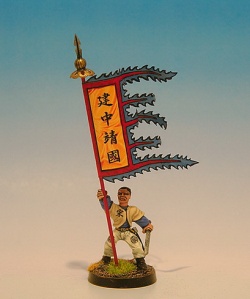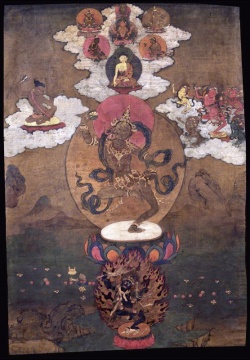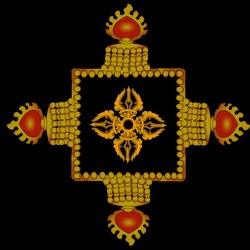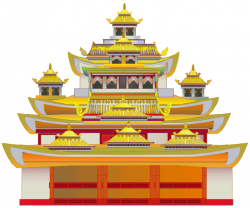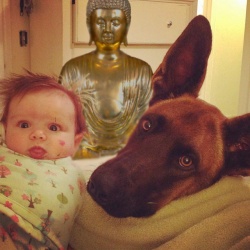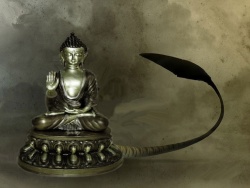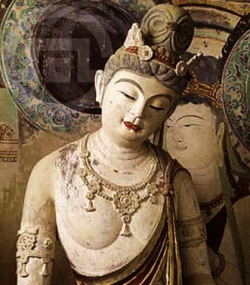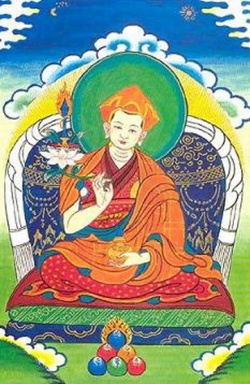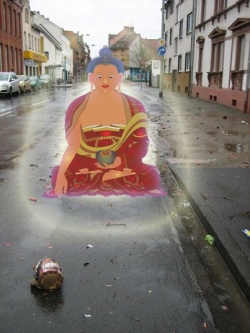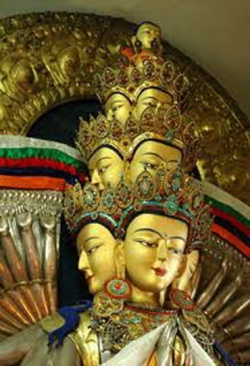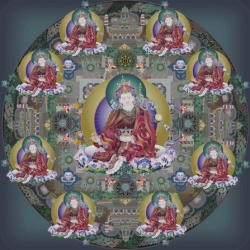The Four Noble Truths
Now this, monks, is the noble Truth of stress: Birth is stressful, aging is stressful, Death is stressful; sorrow, lamentation, pain, distress, and despair are stressful; association with the unbeloved is stressful, separation from the loved is stressful, not getting what is wanted is stressful. In short, The five aggregates for sustenance are stressful.
And this, monks, is the noble Truth of the origination of stress: the Craving that makes for further becoming — accompanied by passion and delight, relishing now here and now there — i.e., Craving for sensual pleasure, Craving for becoming, Craving for non-becoming.
And this, monks, is the noble Truth of the cessation of stress: the remainderless fading and cessation, Renunciation, relinquishment, release and letting go of that very Craving.
And this, monks, is the noble Truth of the way leading to the cessation of stress: precisely this Noble Eightfold Path — right view, right intention, right speech, Right Action, Right livelihood, Right effort, right Mindfulness, Right concentration.
Vision arose, insight arose, discernment arose, Knowledge arose, illumination arose within me with regard to things never heard before: 'This is the noble Truth of stress'...'This noble Truth of stress is to be comprehended'...'This noble Truth of stress has been comprehended'...
'This is the noble Truth of the origination of stress'...'This noble Truth of the origination of stress is to be abandoned'...'This noble Truth of the origination of stress has been abandoned'...
'This is the noble Truth of the cessation of stress'...'This noble Truth of the cessation of stress is to be directly experienced'...'This noble Truth of the cessation of stress has been directly experienced'...
'This is the noble Truth of the way leading to the cessation of stress'...'This noble Truth of the way leading to the cessation of stress is to be developed'...'This noble Truth of the way leading to the cessation of stress has been developed.'
And, monks, as long as this Knowledge and vision of mine — with its three rounds and twelve permutations concerning these Four Noble Truths as they actually are — was not pure, I did not claim to have directly awakened to the unexcelled right self-Awakening... But as soon as this Knowledge and vision of mine — with its three rounds and twelve permutations concerning these Four Noble Truths as they actually are — was truly pure, then did I claim to have directly awakened to the unexcelled right self-Awakening... The Knowledge and vision arose in me: 'Unshakable is my release. This is the last birth. There is now no further becoming.'
The central teachings of the Buddha are called the Four Noble Truths. The first of these truths is that ordinary existence is suffering. The second is that suffering is caused by ignorance and craving. The third is that suffering can be transcended. And the fourth Noble Truth is the way and means to transcend suffering, which is The Noble Eightfold Middle Path. It seems that the Buddha based this schema on the procedure used by ancient Indian physicians. The physician would understand that the patient was ill by observing his or her symptoms. Using his knowledge and experience and questioning the patient, he would try to find out what they had been doing or had eaten or what had happened to them that was making them ill. He would then encourage his patients by telling them that their health could be restored. And finally he would prepare the appropriate medicine, give it to the patient and instruct them how to take it. The Buddha said many times that his role was to show us the way out of suffering, ‘One thing and one thing only do I teach, suffering and how to end suffering’ (Majjhima Nikaya 1. 140). Once a monk approached him and insisted he answer questions about the origins and extent of the universe and other speculative matters. The Buddha refused, saying that humanity was like a man pierced by a poison arrow and that the good physician’s role was to remove this arrow, not to tell the afflicted man what type of wood the arrow was made from, what type of feather was used for the flight or the biography of the man who shot it. He then said, ‘And why do I not answer all your questions? Because they are not useful, they do not help in living the holy life, they do not lead to turning away, to dispassion, to stilling, to peace to higher knowledge or to Nibbana. And what do I teach? Suffering, its cause, its transcendence and the way leading to its transcendence. And why do I teach this? Because it is useful, it helps in living the holy life, it leads to turning away, to dispassion, to stilling, to peace, to higher knowledge and to Nibbana’ (Majjhima Nikaya 1.431).
The Four Noble Truths abbreviated in Pali
- Dukkha (suffering)
- Samudaya (suffering has a cause)
- Nirodha (suffering can be ceased)
- Magga (the way is The Noble Eightfold Middle Path)
Buddhism is sometimes confused as a pessimistic religion since it refers to the suffering in life. But this view fails to look at the entirety of The Four Noble Truths. It is not that all life is suffering, but rather that all unenlightened life is suffering. There can be suffering, but there is also a way out of the suffering and that is why there are four noble truths, not one.
Desires fulfilled by sum total of desires
The Buddha taught that life is suffering. However, we create this suffering from our own mind-body actions, feelings, perceptions, and thoughts. We tend to cling and have too much attachment to things that are full of suffering and impermanence. Thus, we find no lasting happiness. This has been put into a mathematical formula (U Kyaw Min, Buddhist Abhidhamma) of desires fulfilled divided by the sum total of desires:
desires fulfilled / sum total of desires
for example: 30/50 = 60% or 30/30 = 100%
If the sum total of desires is 50 and the desires fulfilled are 30, you have 60% of desires fulfilled and suffering from the lack of satisfaction. If however, you reduce your selfish craving by reducing your desires to 30, then you have complete happiness (at least for the impermanent moment until karma formations make new desires). Thus, the traditional translation of the Four Noble Truths are that life is suffering, the cause is selfish desire, suffering ceases when selfish desire ceases, and the way is the Eightfold Middle Path.
Pain exists, suffering is optional
Shinzen Young (dharma teacher, author of several Buddhist books and tapes, Young, 1994) puts the Truths into another mathematical formula of:
The above formula is Suffering = Pain times Resistance. The enlightened person does not deny the existence of pain. The goal is to not put any resistance to it. When we put resistance to the pain, that is the suffering.
To use some figures in the above formula, let's say that on a scale of 0 to 100 for pain you are experiencing a pain of 75.On a scale of 0 to 100 for resistance with 0 representing no resistance and 100 representing maximum resistance, let's say you are resisting at a level of 50. The product is 75 (pain amount) times 50 (the resistance amount) which is 3,750 which is the amount of your suffering (from a scale of 0 to 10,000). This sounds like a lot of suffering. But if you have the same pain level of 75 and place no resistance to it, then the result is no suffering. This is because:
75 x 0 = 0
As we know from multiplication anything multiplied by a factor of zero is zero. So therefore, there is no denying the existence of pain, we must just learn to accept it, observe it, and watch it vanish, as we apply no resistance to it. The end result is no suffering.
Expectations
Bestselling Dhamma book author, Dr. David N. Snyder, drawing on the insights of U Kyaw Min and Young, has further refined the Noble Truths into another mathematical formula, shown below.
The Four Noble Truths have also been considered as a physician’s prescription with the Buddha as the Great Physician, symbolically healing the world with the answers to our everyday suffering. The First Noble Truth describes the condition, the Second Noble Truth is the cause or diagnosis, the Third Noble Truth is the prognosis, and the Fourth Noble Truth is the treatment.
Variables:
- L = “un-enlightened” life
- S = suffering
- 8 = eightfold middle path
All of the other symbols are mathematical symbols. The translation of the above mathematical expression with the definition of the mathematical symbols in italics:
- For all life, that there exists, there is suffering.
- Suffering exists because of unfulfilled expectations.
- Therefore, it follows that, the logical negation of false expectations leads to no suffering.
- By following the eightfold middle path, you have the absolute value of fulfilled expectations which are greater than or equal to the sum total of all expectations.
(View a PDF with the above symbolic representation.)
Reasonable expectations, which are attainable are okay, it is the unreasonable expectations that cause suffering.
“Why do what you will regret? Why bring tears upon yourself? Do only what you do not regret, and fill yourself with joy.” (Dhammapada, ch. 5)
“And how householder, does one entertain expectations? Here, householder, someone thinks: may I have such form in the future! May I have such feeling in the future! May I have such perception in the future! May I have such volitional formations in the future! May I have such consciousness in the future! It is in such a way that one entertains expectations.
Having left home to roam without abode, in the village the sage is intimate with none; rid of sensual pleasures, without expectations, he would not engage people in dispute.” (Samyutta Nikaya 22.3)
Although not a Buddhist, Bill Gates (richest person in the world from 1996-2009) followed a formula similar to the one showed here. He is quoted in interviews saying that he and his compay, “under-promise and over-deliver.” This is another way of saying keep the expectations low and then exceed them. For example, if he (or another CEO) told his stock holders that the stock will probably go up 100 points next year and then it only goes up 60 points, the investors will be upset. But if he under-promises, by stating that the stock will go up 20 points and then it goes up 60 points, the investors are happy. There is the same result, but in the first scenario people tend to get upset (expectations not met) and in the second (expectations exceeded), they are happy.
- 1. Promise 100 pt. increase; actual = 60 pts. = investors upset
- 2. Promise 20 pt. increase; actual = 60 pts. = investors happy
See also
- The domain name http://www.the4nobletruths.com/ redirects to this page.
References
- The Complete Book of Buddha's Lists -- Explained. David N. Snyder, Ph.D., 2006.
- http://www.thedhamma.com/
- What the Buddha Taught, W. Rahula, Ph.D., 1959.
- Buddhist Abhidhama. U Kyaw Min, 1987.
- Purpose and Method of Vipassana Meditation; The Humanistic Psychologist. Shinzen Young, 1994.
Source
In His first sermon to the five ascetics in the Deer Park near Varanasi, the Buddha spoke of the Four Noble Truths. The Four Noble Truths summed up, in a systematic formula, are the central teaching of the Buddha.
- 1. The Truth of Suffering;
- 2. The Truth of the Cause of Suffering;
- 3. The Truth of the End of Suffering;
- 4. The Truth of the Path leading to the End of Suffering.
The Truth of Suffering
The Buddha’s discovery of the solution to the problem of suffering began with the recognition that life is suffering. This is the first of the Four Noble Truths. If people examine their own experiences or look at the world around them, they will see that life is full of suffering. Suffering may be Physical or Mental.
Physical Suffering
Physical suffering takes many forms. People must have observed at one time or another, how their aged relatives suffer. Most of the aged suffer aches and pains in their joints and many find it hard to move about by themselves. With advancing age, the elderly find life difficult because they cannot see, hear or eat properly. The pain of disease, which strikes young and old alike, is unbearable, and the pain of death brings much grief and suffering. Even the moment of birth gives pain both to the mother and to the child that is born.
The truth is that suffering of birth, old age, sickness and death is unavoidable. Some fortunate people may now be enjoying relatively happy and carefree lives, but it is only a matter of time before they, too, will experience suffering. What is worse, this suffering must be born alone.
Mental Suffering
Beside physical suffering, there are also various forms of mental suffering. People feel sad, lonely or depressed when they lose someone they love through separation or death. They feel irritated or uncomfortable when they are forced to be company of those whom they dislike or those who are unpleasant. People also suffer when they unable to satisfy their limitless needs and wants.
Happiness in Life
When the Buddha said that there is suffering in life, he did not deny that there is happiness also. On the contrary, he spoke of many kinds of happiness such as the happiness of friendship, the happiness of family life, and so on. But all these kinds of happiness are impermanent and when one loses them, one suffers. For example, one may like a pleasant and charming person and enjoy his or her company. But when one is separated from that person, the happiness turns into suffering. One suffers because of one’s attachment to pleasures that do not last.
People often remain unaware of the inevitable sufferings of life because they are distracted by temporary pleasures.
The Truth of the Cause of Suffering
The Buddha had observed that life is suffering. Before He could find a solution to the problem of suffering in life, he had to first look for the cause of suffering. The Buddha was just like a good doctor who first observes a patient’s symptoms and identifies the cause of the illness before prescribing a cure. The Buddha discovered that the direct causes of suffering are desire or craving, and ignorance. This is the truth of the cause of suffering, which is the Second Noble Truth.
Craving
Craving is the deep-seated desire that all living beings have for the pleasures of the senses and for life itself. For instance, people always seek to enjoy good food, entertainment and pleasant company. Yet none of these can give them complete and lasting satisfaction. After the fine meal has been eaten, the beautiful music heard and the pleasant company shared, one is still not content. One would like to enjoy these pleasures again and again, and for as long as possible.
People who desire to own many things can never be fully satisfied too. Like children in a toy shop, they crave for all the attractive things they see around them. But like children too, they soon become dissatisfied with what they already have and desire for more. Sometimes, they can hardly eat or sleep until they get what they want. Yet when they succeeded in getting what they want, they may still find their happiness short-lived. Many will be too worried for the safety and condition of their new possessions to enjoy it. Then when the object they possess eventually breaks into pieces and has to be thrown away, they will suffer its loss even more.
When we have obtained something that we desire, we may want more and more of it and so greed arises. Because of desire and greed, people will lie, cheat and steal to get what they want. Uncontrolled desires can also lead to addiction, for example, smoking, drinking and overeating all lead to suffering and cause mental and physical harm.
If one is prevented by another person from getting what one desires, one may feel anger with that person. Desire when obstructed can lead to ill will and anger. This in turn can lead to harsh words, violent quarrels and even fights or killings. All this is suffering.
Ignorance
Craving or desire is like a great tree having many branches. There are branches of greed, of ill will and of anger. The fruit of this tree is suffering, but how does the tree of craving arise? Where does it grow? The answer is that the tree of craving is rooted in ignorance. It grows out of ignorance. Ignorance is the inability to see the truth of things, to see things as they really are. There are many truths about the world which people are ignorant of because of the limitations of their understanding.
Science has shown, for instance, that there are sounds that people are unable to hear and waves of light, which they are unable to see. People would be totally unaware of radio waves, or ultra-violet light rays if special instruments had not been developed to enable them to observe these things. So long as people remain ignorant of things about the world in which they live, they suffer from all kinds of misunderstandings and delusions.
When people develop their minds and acquire wisdom through study, careful thought and meditation they will see the Truth. They will see things as they really are. They will understand the suffering and impermanence of life, the Law of Cause and Effect and the Four Noble Truths. By overcoming craving and ignorance, they will attain happiness and Enlightenment just as the Buddha did about 2500 years ago.
The Truth of the End of Suffering
The Buddha’s realization of the end of suffering and his attainment of Nirvana at the age of thirty-five, crowed his search for Truth with success. For six years, the Bodhisattva had spared no effort to find a solution to the problems of suffering. He had tried the principal methods of ending suffering and had found them incomplete. Eventually he found his own solutions to the problems of life.
Confidence in the Buddha’s Teaching
Having realized the Truth through his own efforts, the Buddha offered it to all that were ready to listen.
There is an old story of a turtle and a fish. The turtle lived on land as well as in the water while the fish only lived in the water. One day, when the turtle had returned from a visit to the land, he told the fish of his experiences. He explained that creatures walked rather than swam. The fish refused to believe that dry land really existed because it was something beyond his own experience. In the same way, people may not have experienced the end of suffering, but it does not mean that the end of suffering is not possible.
A patient must have confidence in an experienced doctor, otherwise he will never take the medicine that the doctor has prescribed and he will not be cured of his sickness. Similarly, people must have confidence in the Teaching of the Buddha, who has shown that end of suffering is really possible.
The End of Suffering
The end of suffering is the final goal of the Buddha’s Teaching. It can be experienced by anyone here and now. For example, when greed and anger arise in one’s mind, one experiences unhappiness and when the thoughts of greed and anger cease, one’s mind becomes happy and peaceful. To end suffering completely one must remove desire, ill will and ignorance. This is the Third Noble Truth of the End of Suffering.
Happiness
The Buddha taught that the end of suffering is supreme happiness. Every step towards the end of suffering is accompanied by ever-increasing joy. Those who follow the Teachings of the Buddha live happily without greed, even among those who are overwhelmed by desire. They live happily without anger, among those who harbor ill will. The more people free themselves from desire, ill will and ignorance, the greater their happiness will be. When they have completely overcome desire, ill will and ignorance, they will know the supreme happiness as experienced by the Buddha.
Enlightenment
By putting the Buddha’s Teachings into practice, people can also achieve supreme Enlightenment. Enlightenment has countless qualities, of which perfect wisdom and great compassion are the most important. With perfect wisdom and great compassion we are able to help countless beings to overcome their suffering.
Experiencing Nirvana for Oneself
The end of suffering has been described as supreme happiness and Enlightenment. However, these terms do not fully express the real nature of the end of suffering, or Nirvana. Nirvana cannot be exactly put into words. Attempting to describe Nirvana is like saying that a mango is sweet, but not like a banana or apple. One has to eat a mango in order to know for oneself what it really tastes like. Similarly Nirvana has to experienced for oneself.
Therefore, if people have confidence in the Buddha’s Teachings and put them into practice, they can achieve happiness, peace and Enlightenment.
The Truth of the Path leading to the End of Suffering
The Middle Path
As a youth, Prince Siddhartha enjoyed an indulgent life of pleasure in his father’s palace. Later, when he renounced the worldly life and become an ascetic, he experienced the hardship of torturing his mind and body. Finally, not long before attaining Enlightenment he realized the fruitlessness of these two extreme ways of life. He realized that the way to happiness and Enlightenment was to lead a life that avoids these extremes. He described this life as the Middle Path.
These three ways of life may be compared to the strings of different tensions on a lute. The lose string, which is like a life of indulgence, produces a poor sound when struck. The tightest string, which is like a life of extreme asceticism, similarly produces a poor sound when struck and is also likely to break at any moment. Only the middle string, which is neither too lose nor too tight, produces a pleasant and harmonious sound when stuck. The middle path, like the middle string, is the best to chose.
So those who follow the Middle Path and avoid the extremes of indulging in one’s desires and the opposite extreme of unreasonably torturing one’s body and mind, will find happiness, peace of mind and Enlightenment. This is the Fourth Noble Truth of the path leading to the end of suffering.
The Noble Eightfold Path
Like a wise and experience doctor, the Buddha recognized the sickness of suffering. He identified its cause and discovered its cure. Then for the benefit of mankind, the Buddha put his discovery into a systematic formula, which can be easily followed in order to end our suffering. The formula includes both physical and mental treatment, and is called the Noble Eightfold Path.
